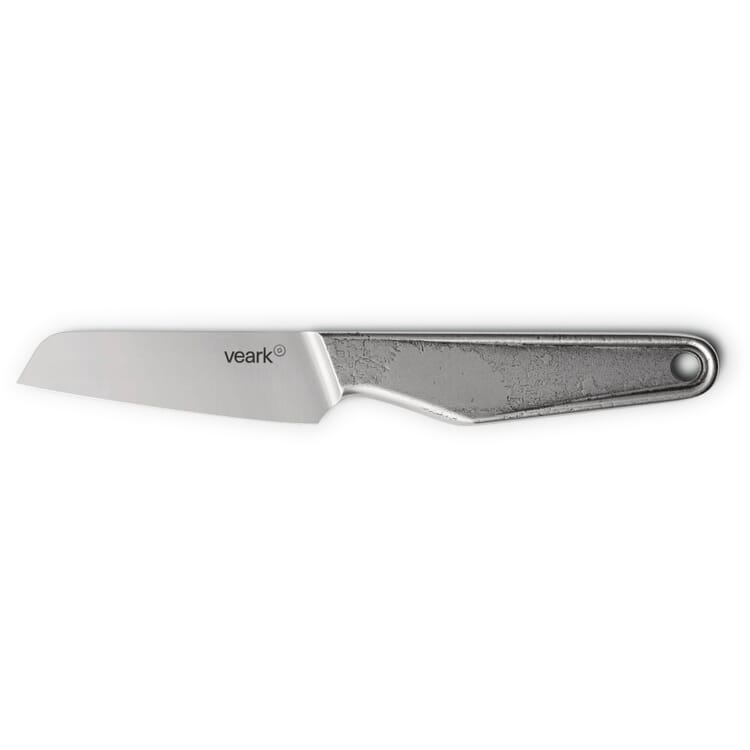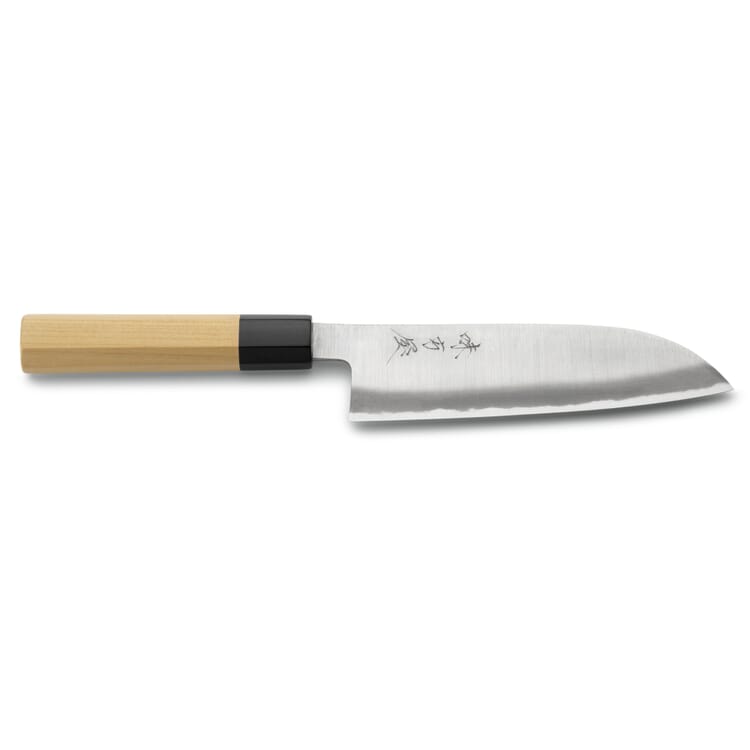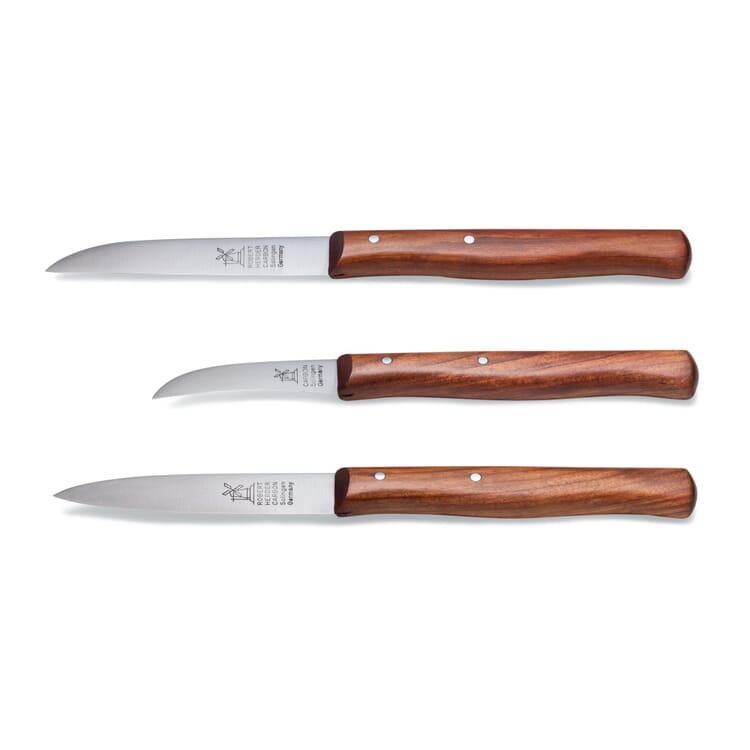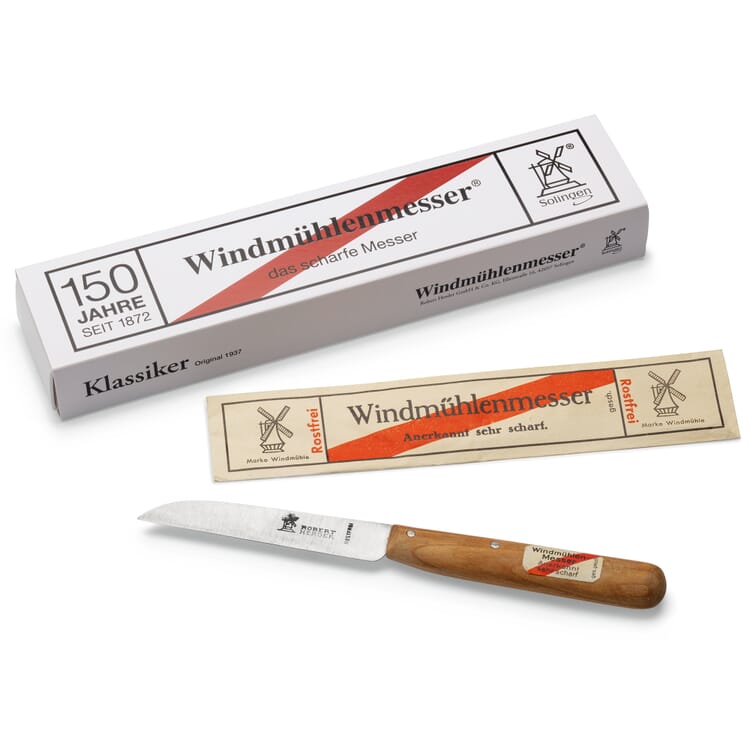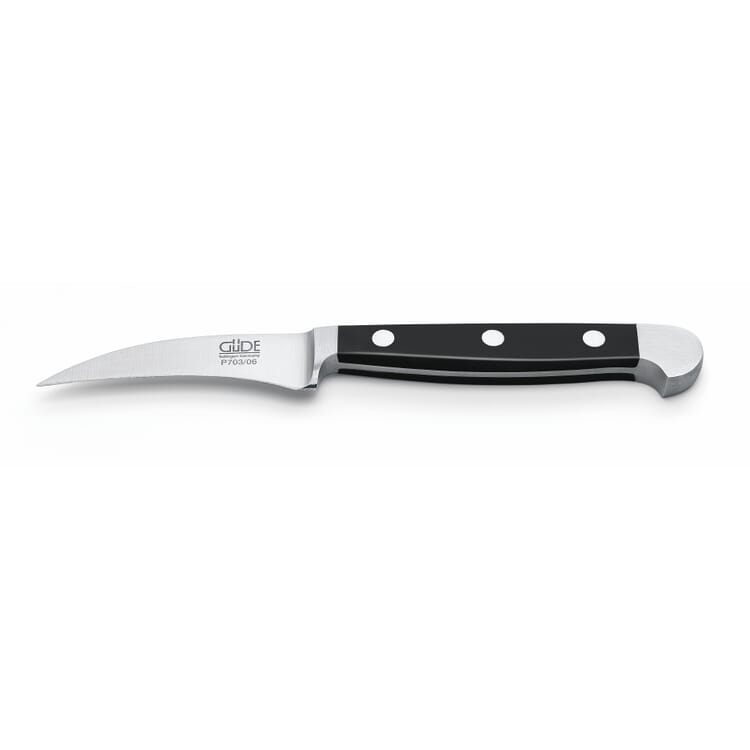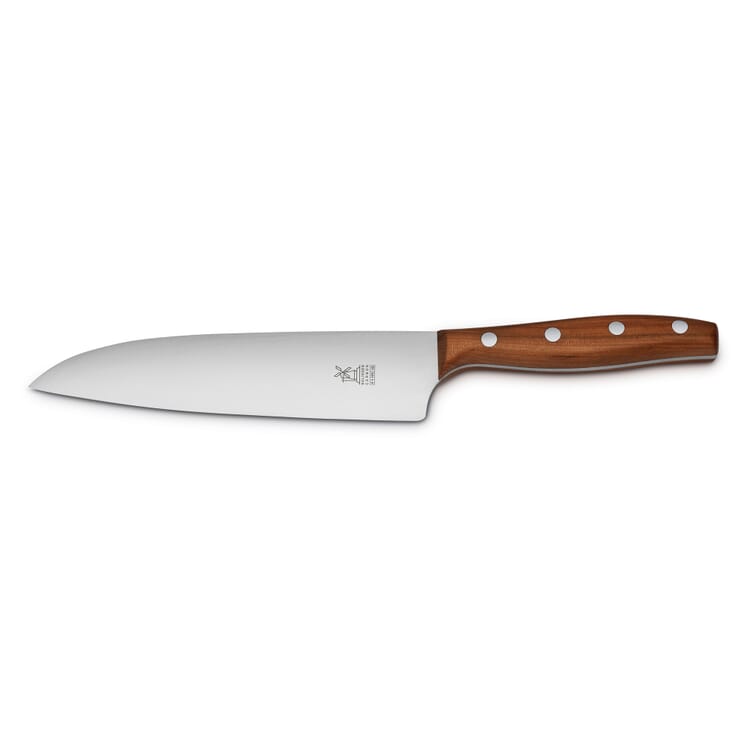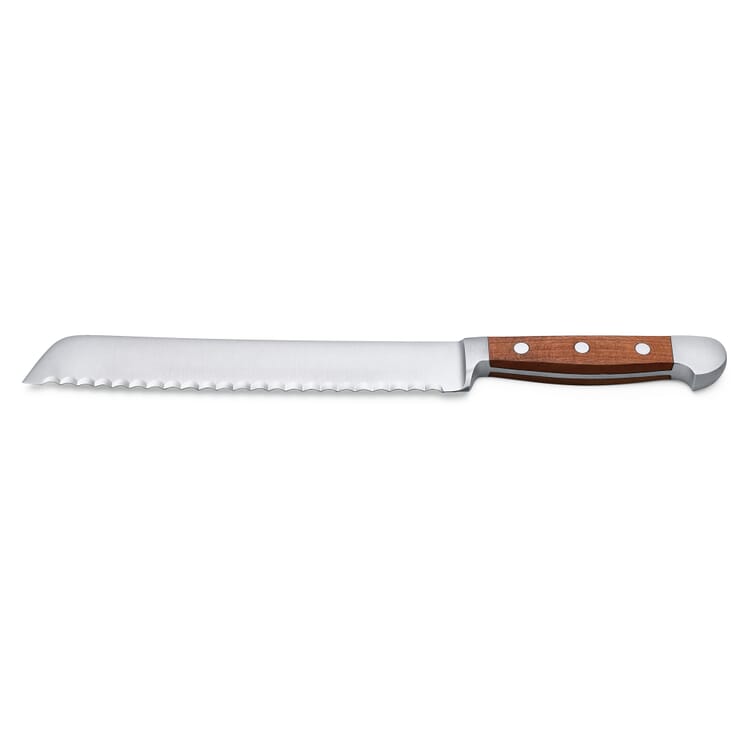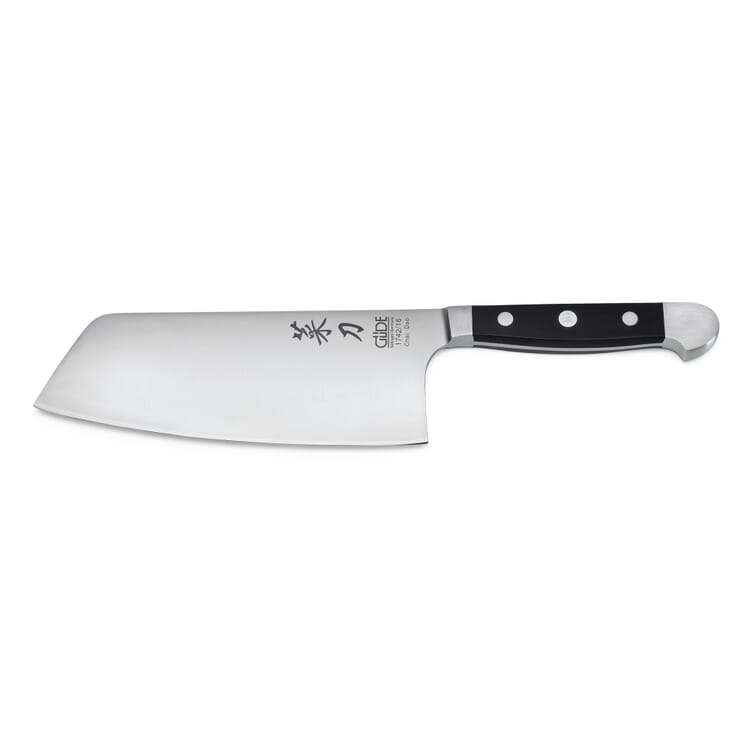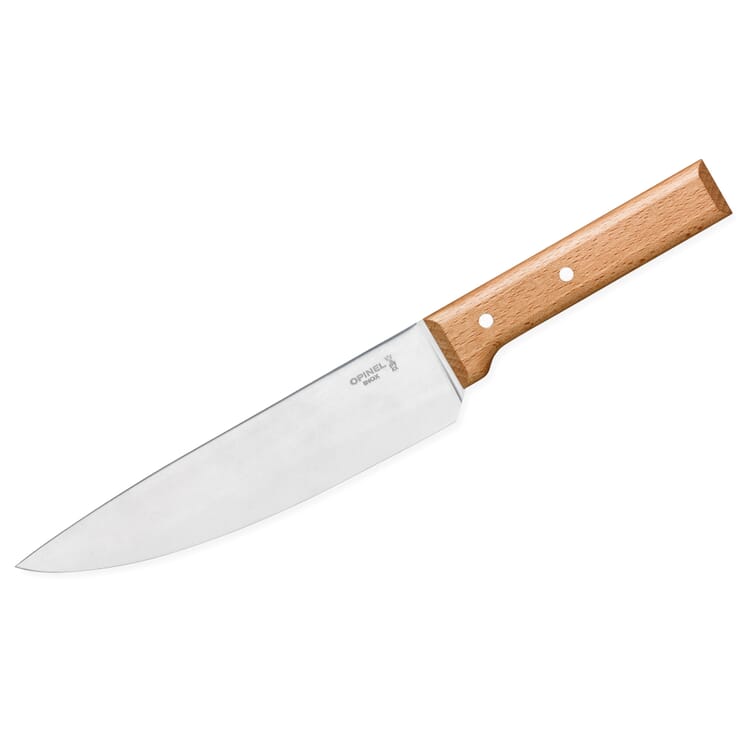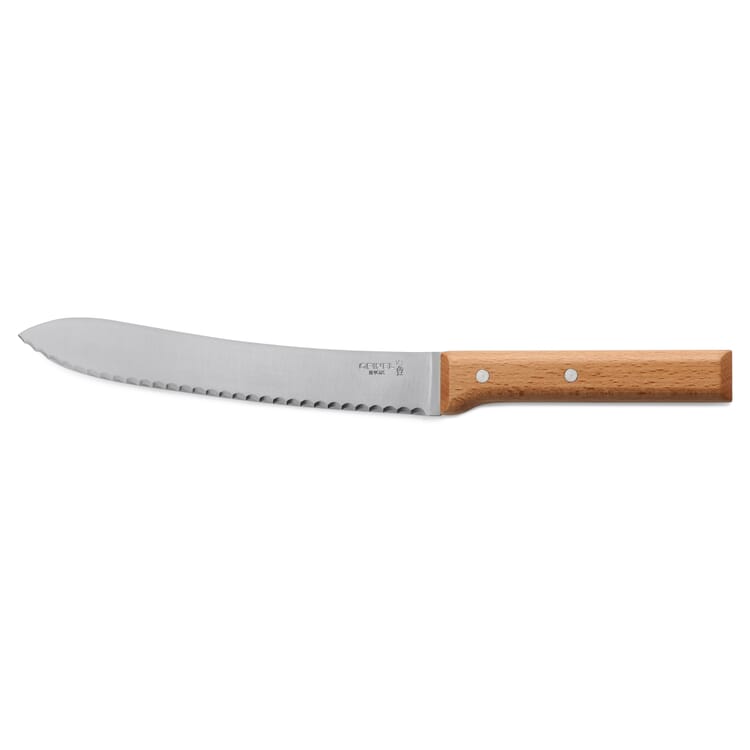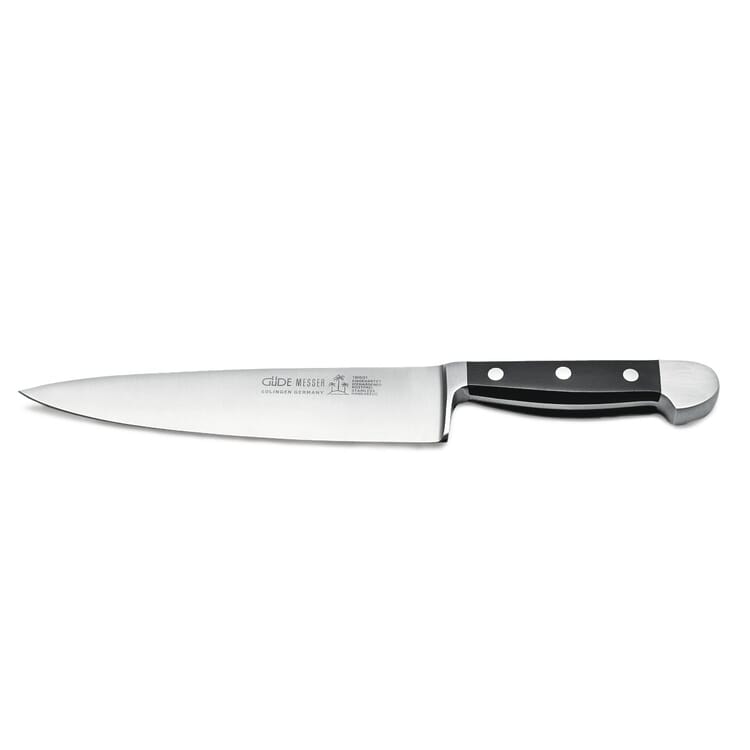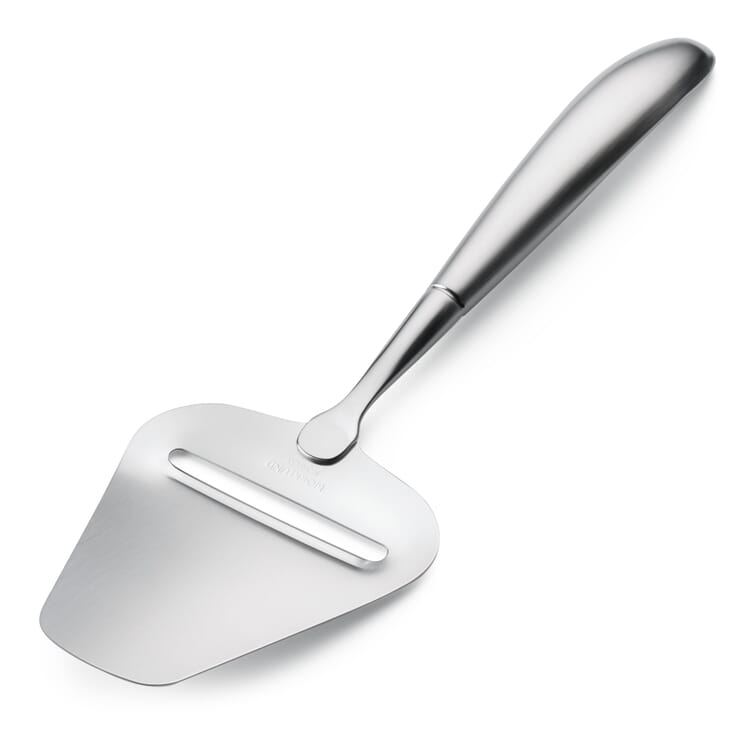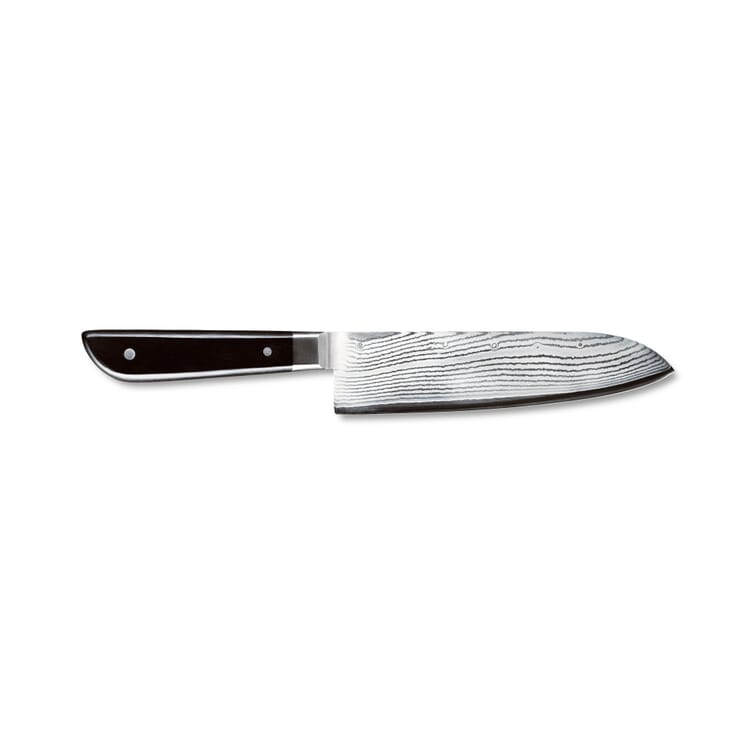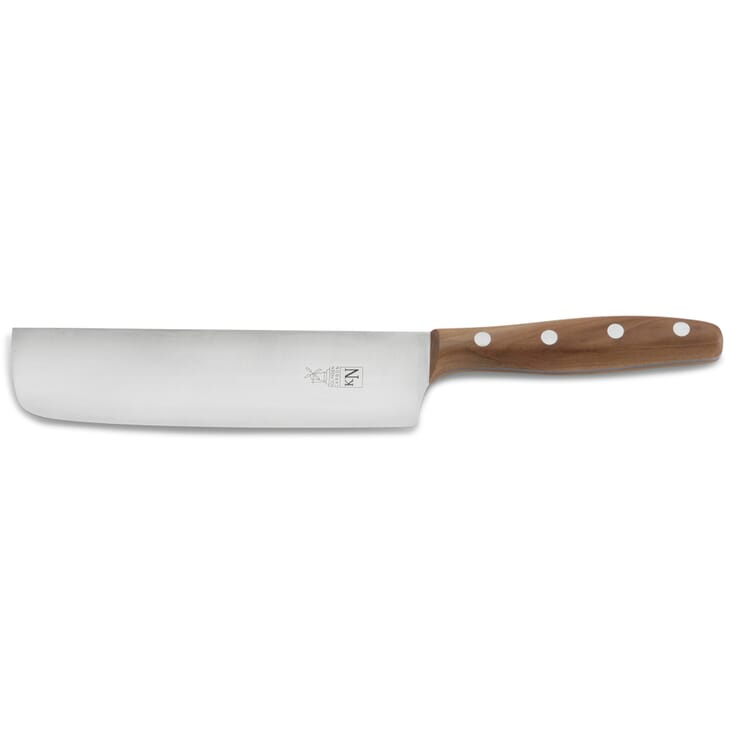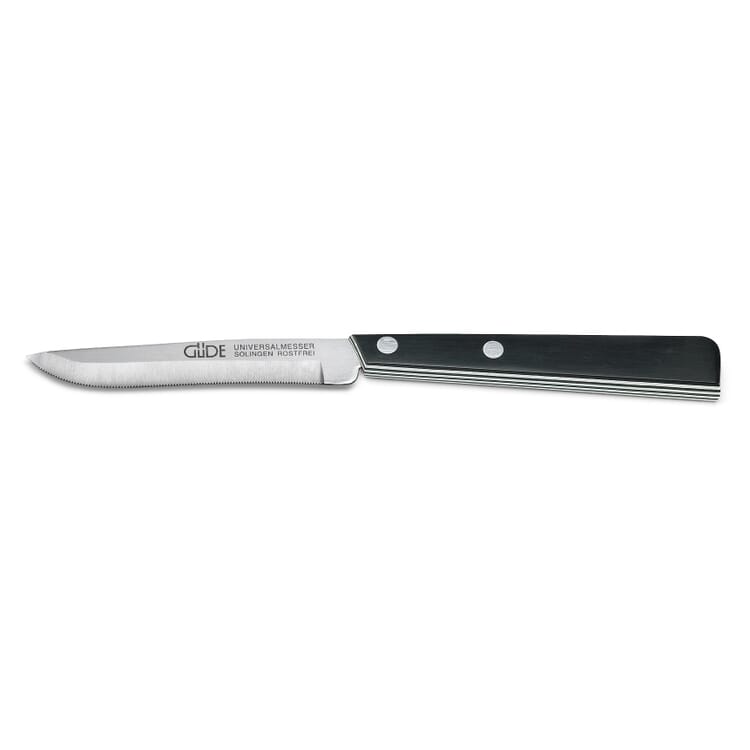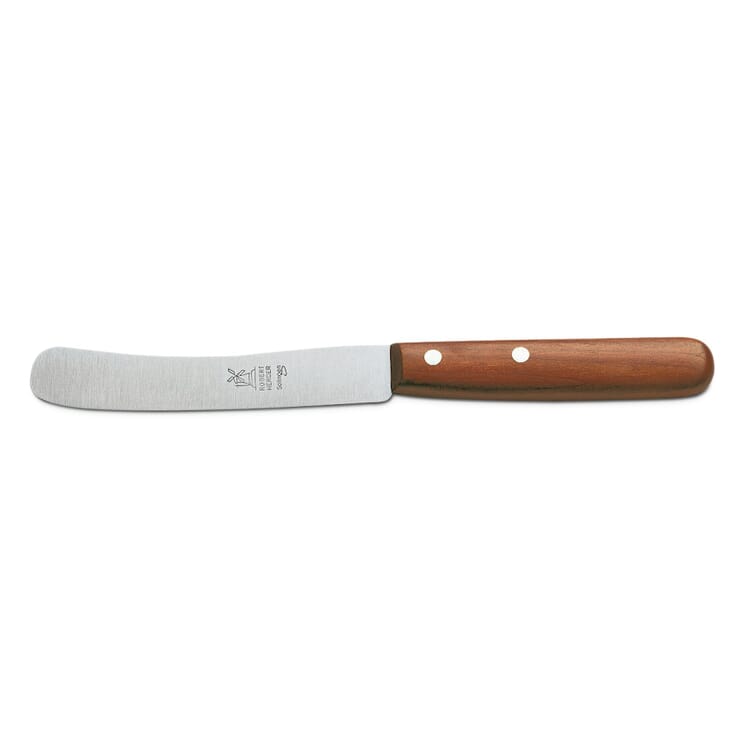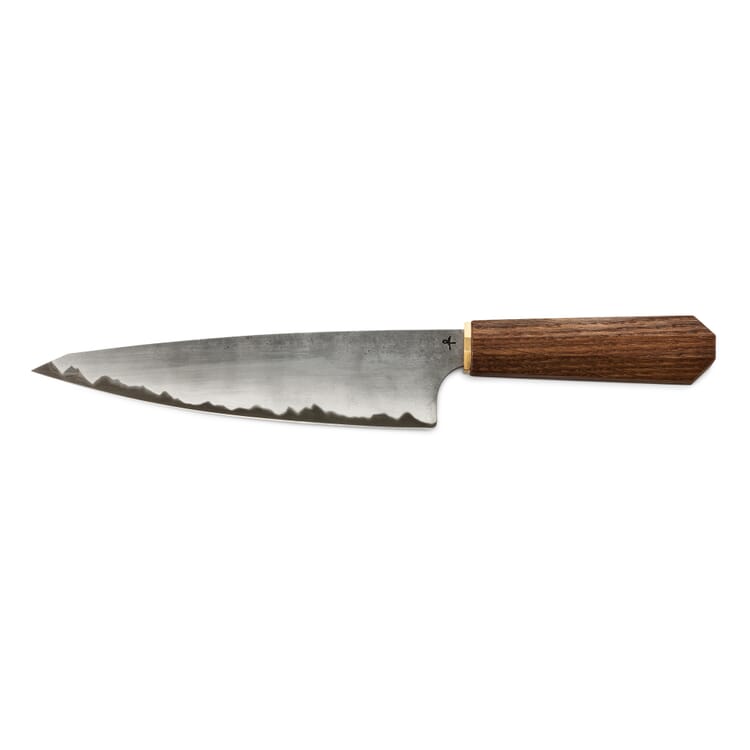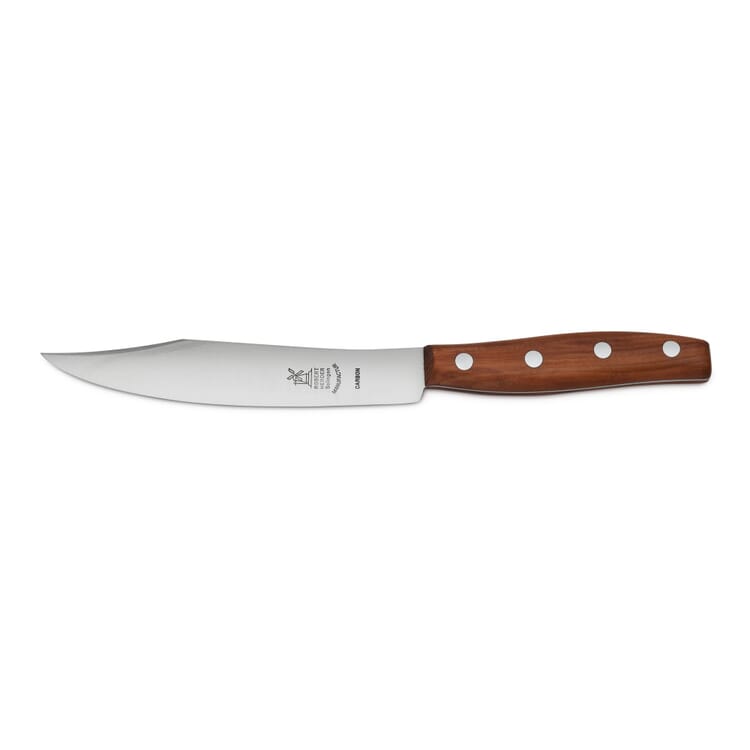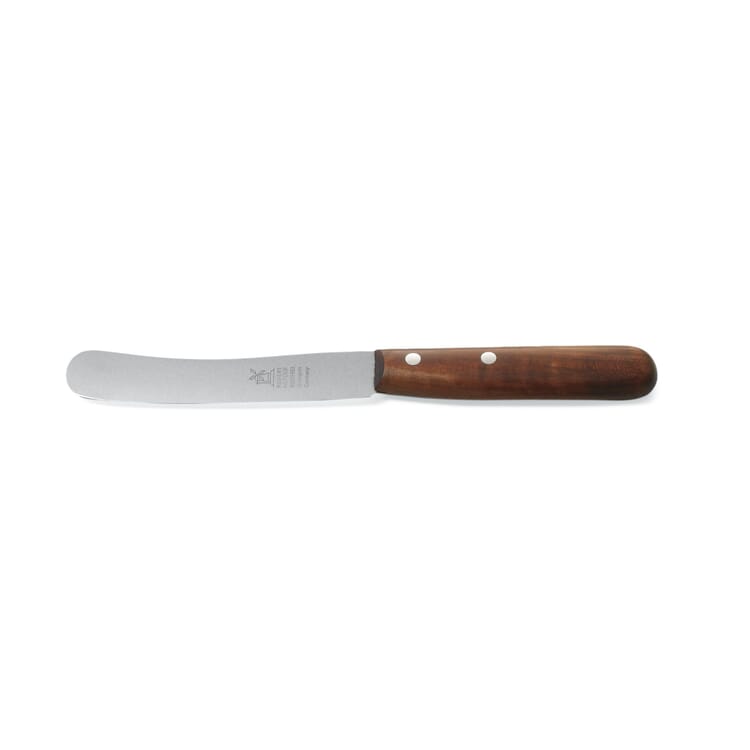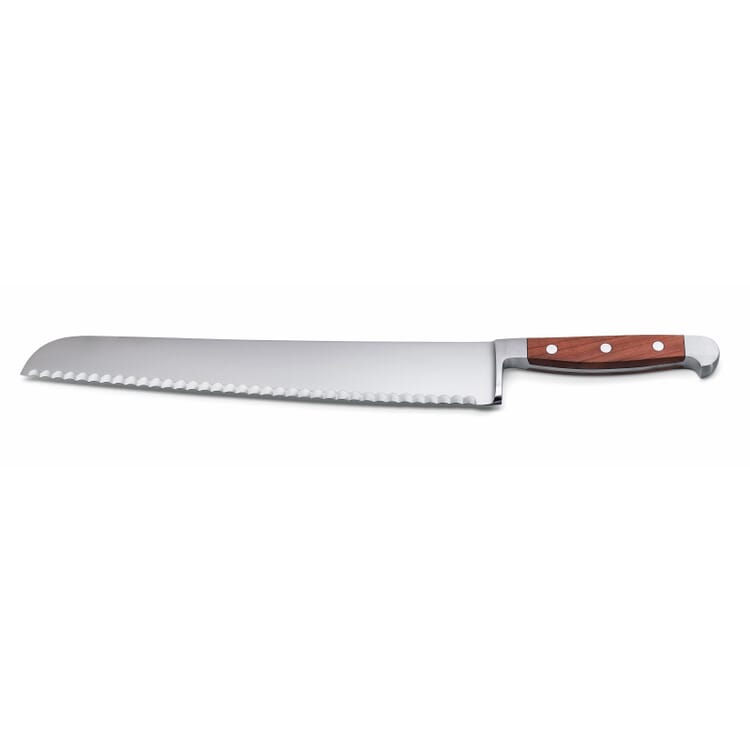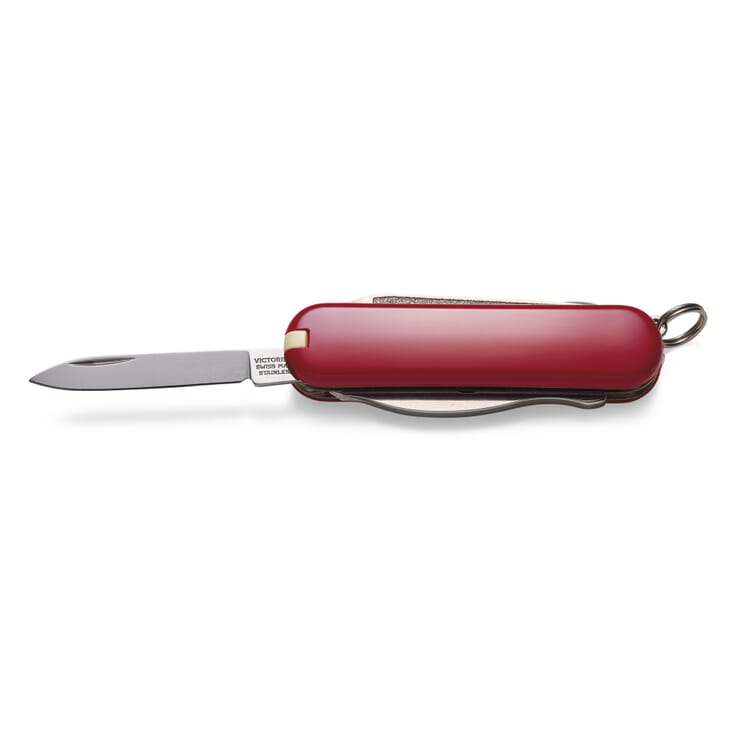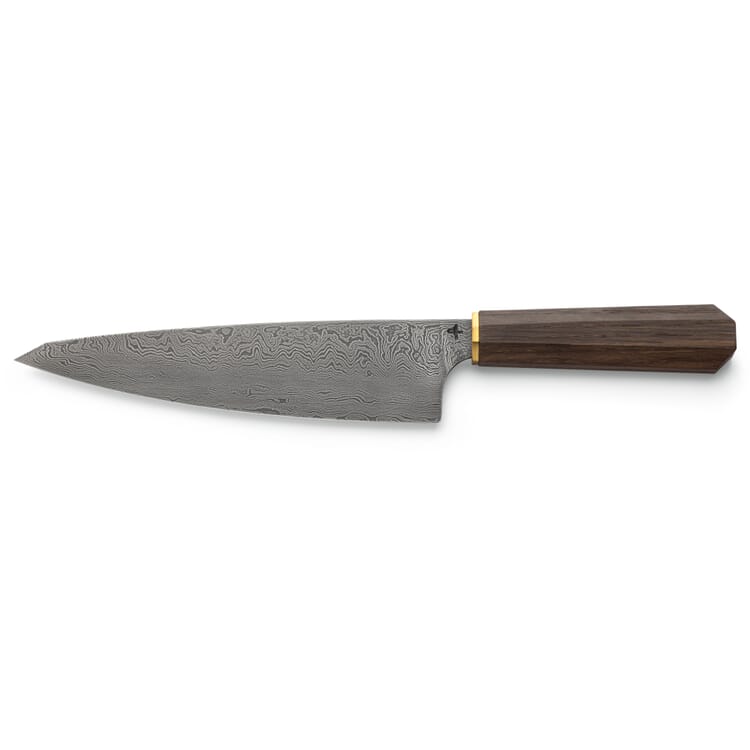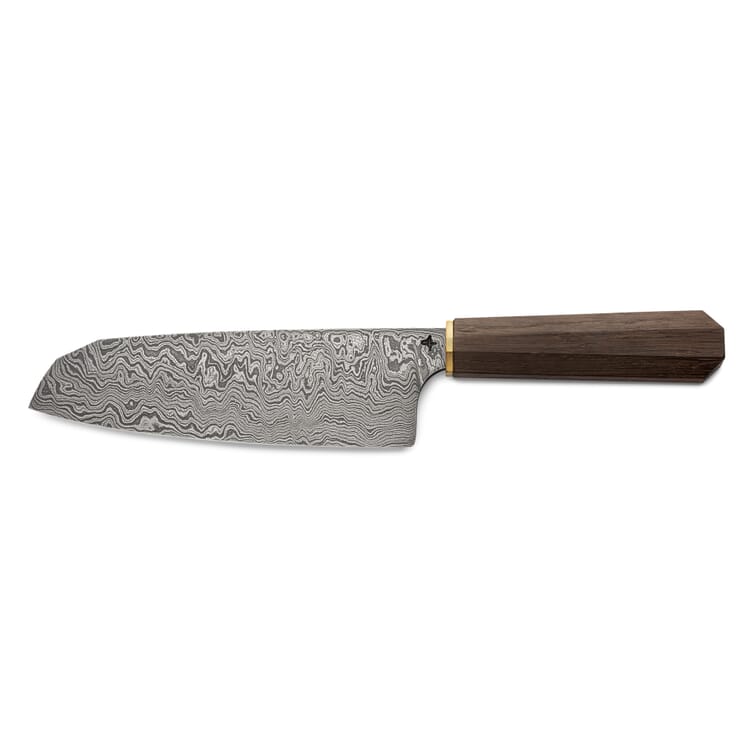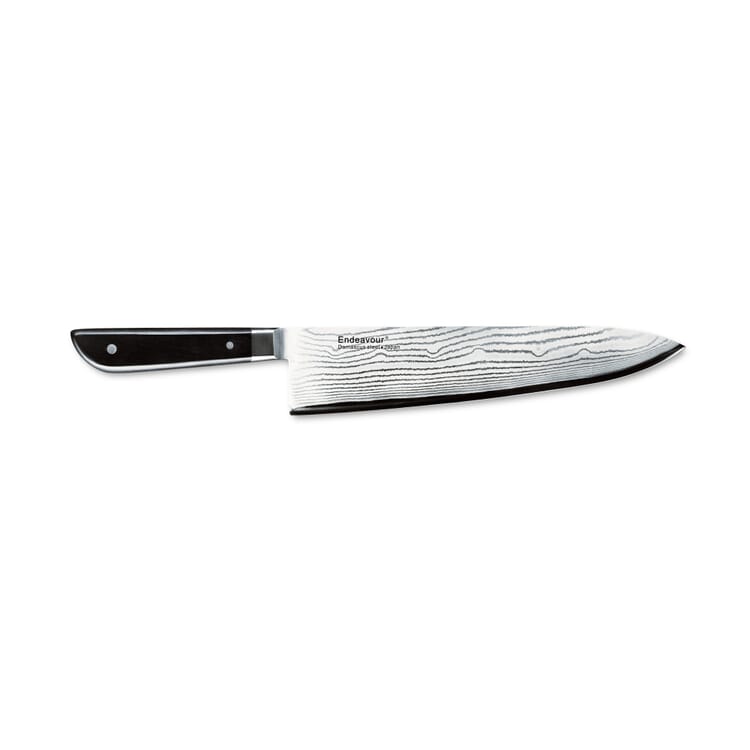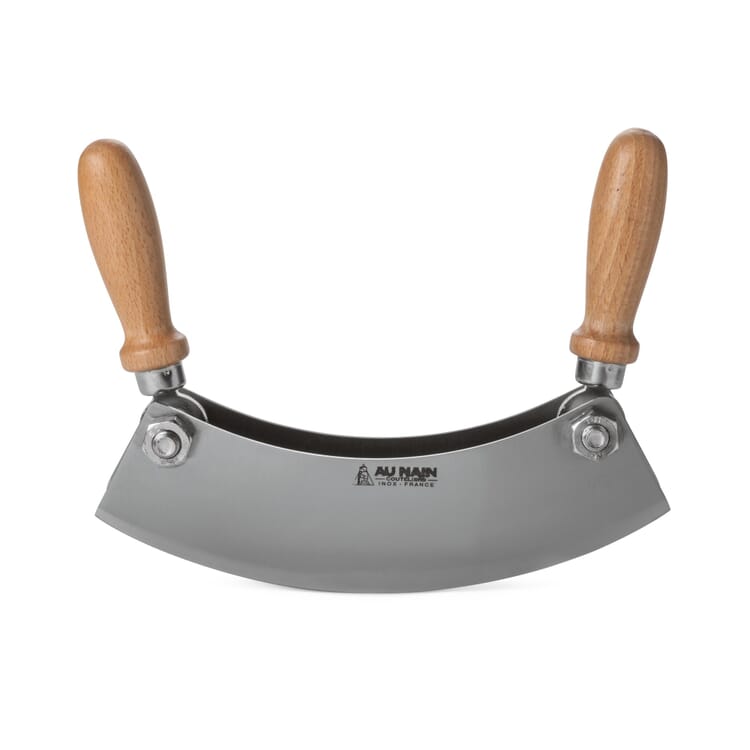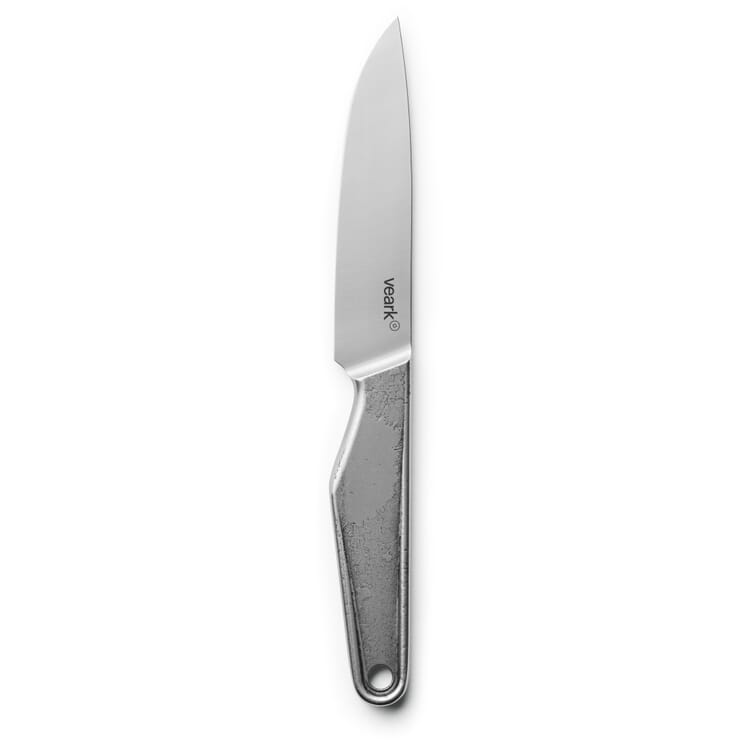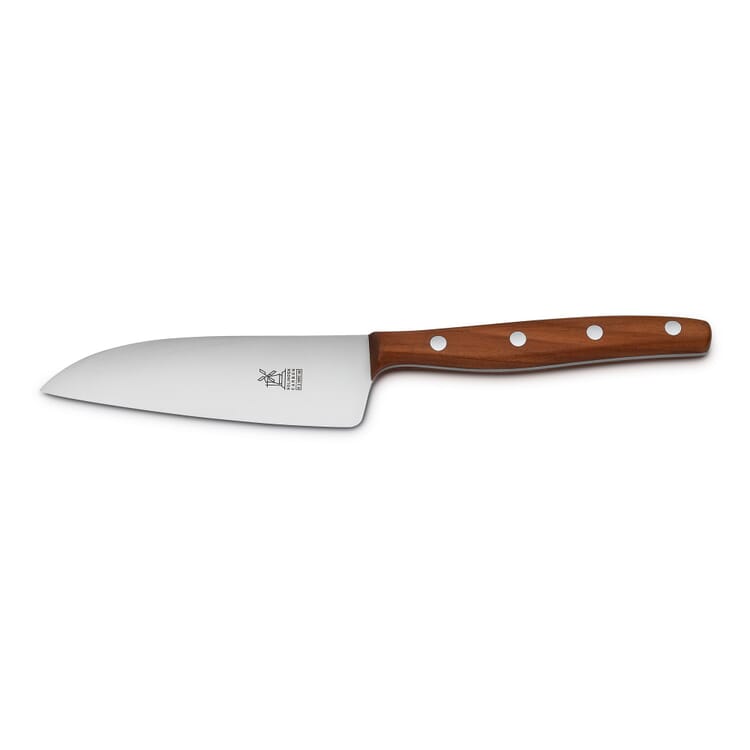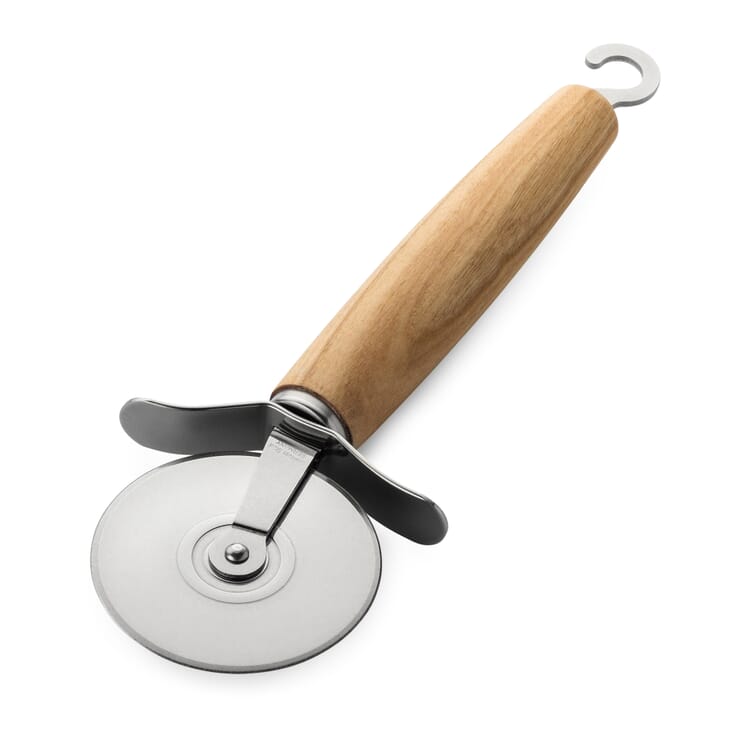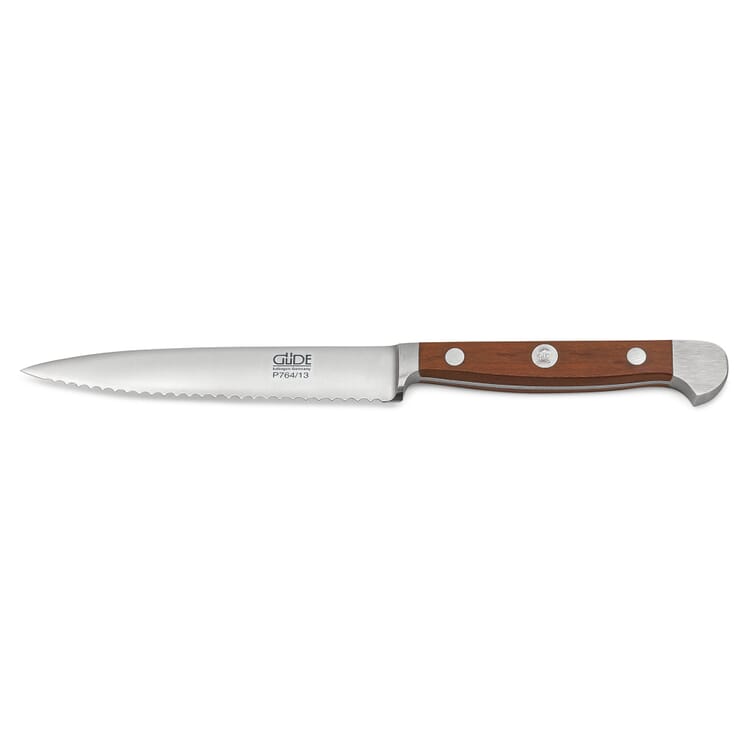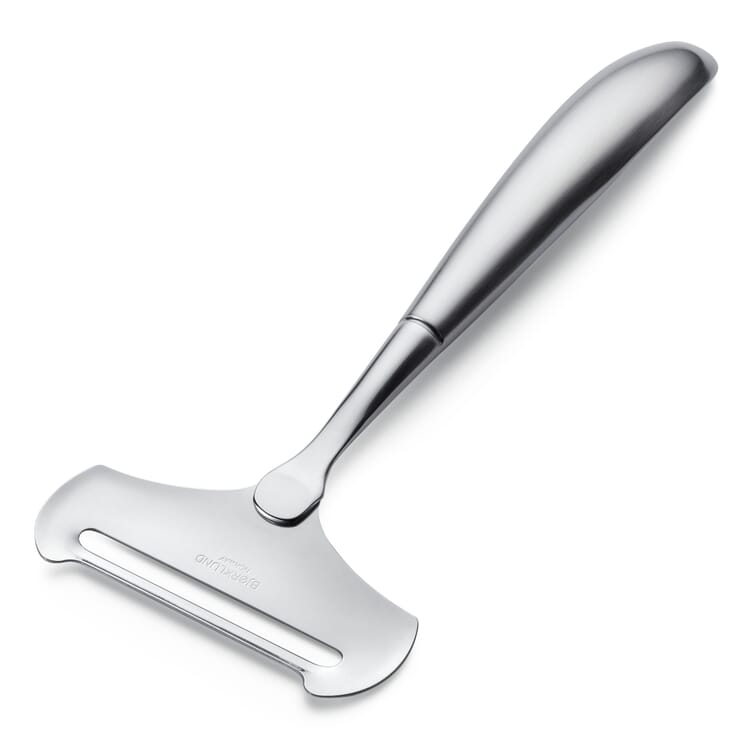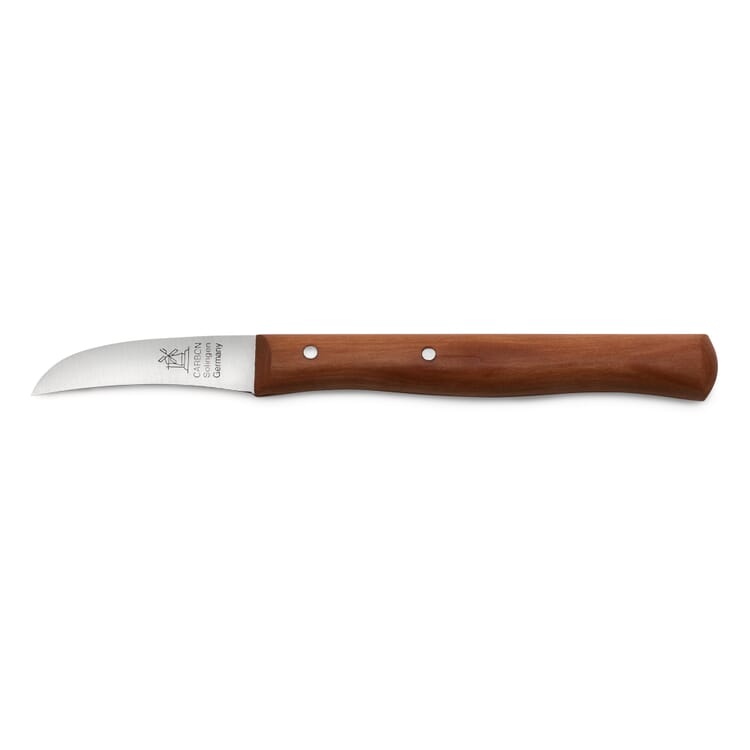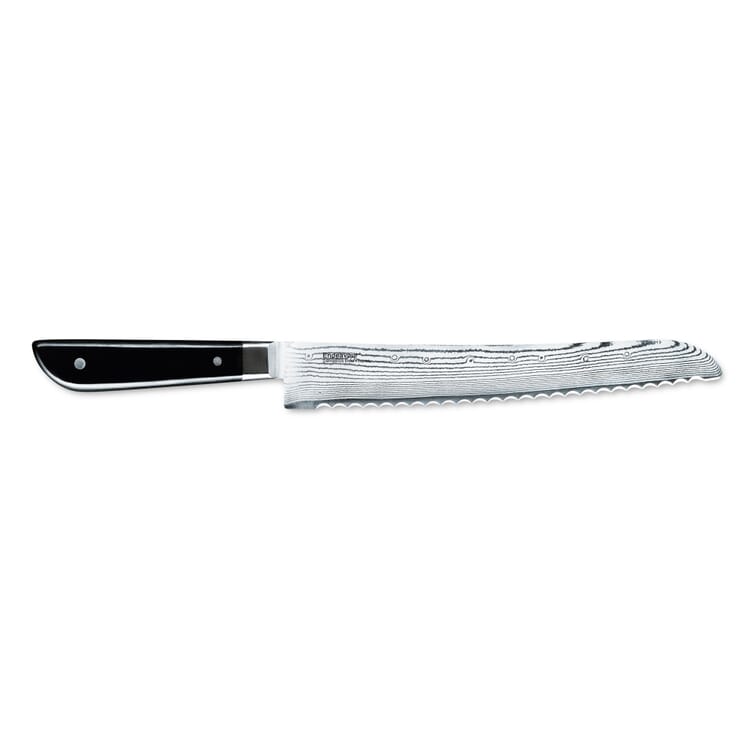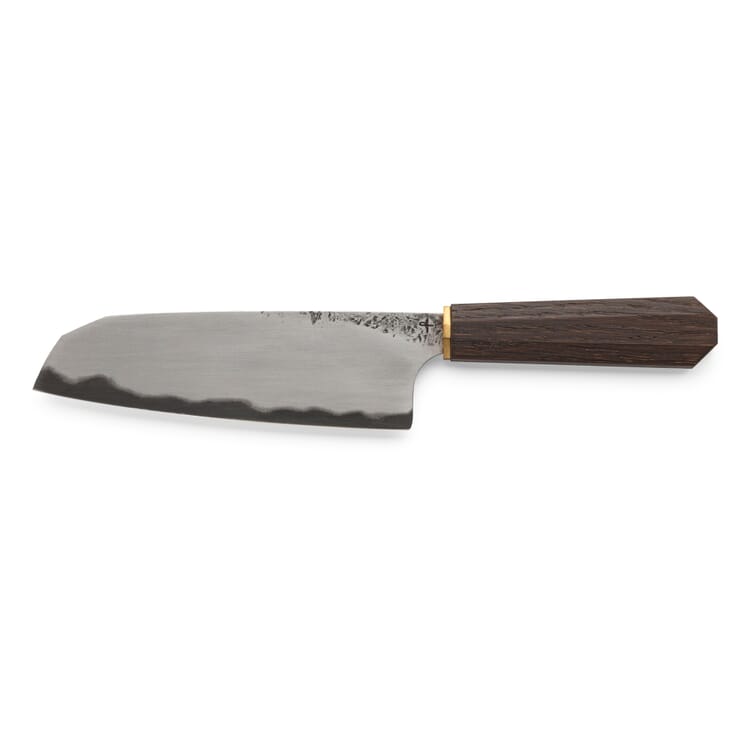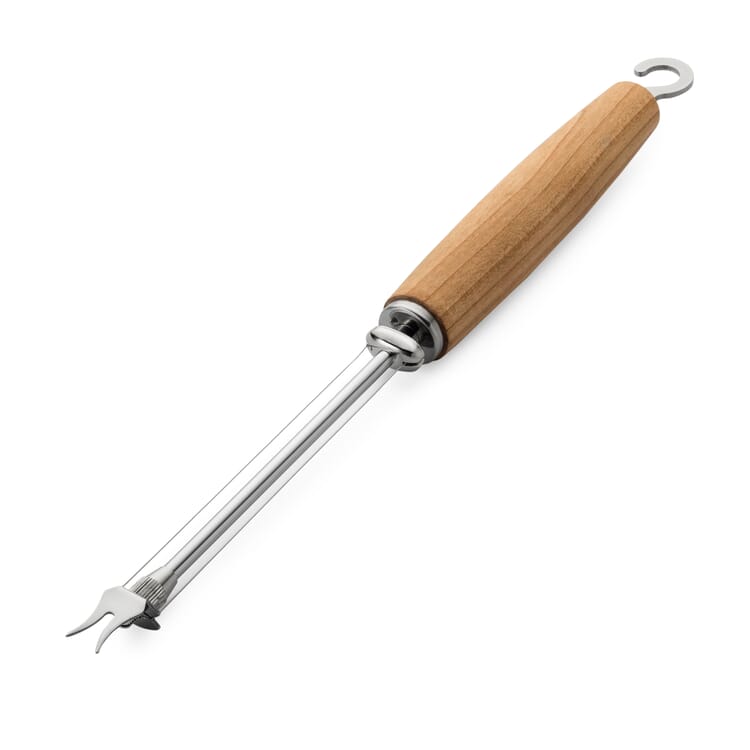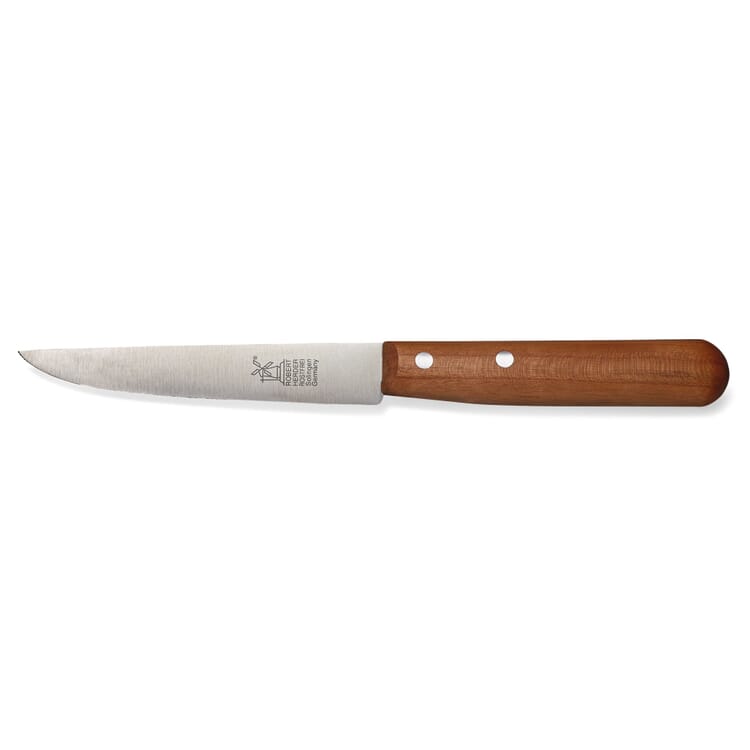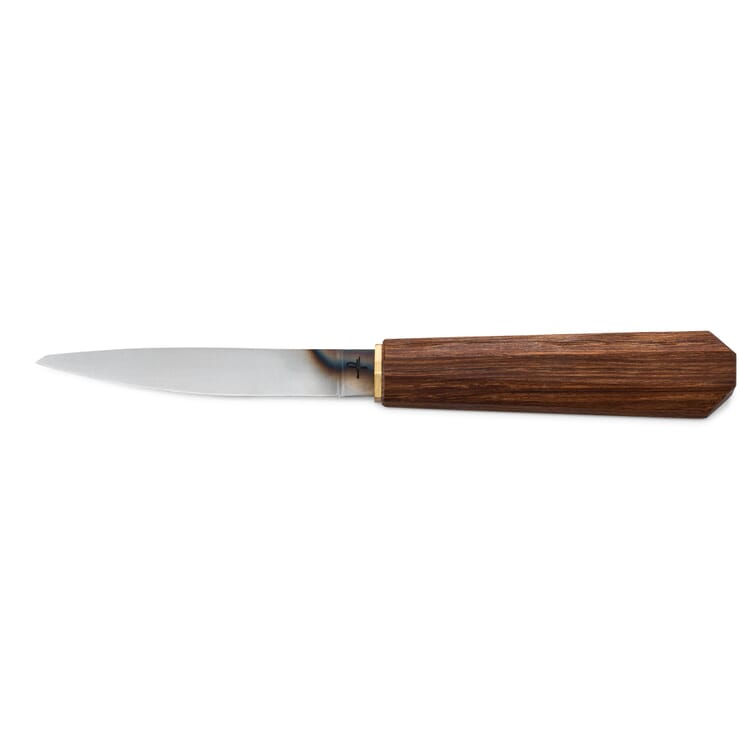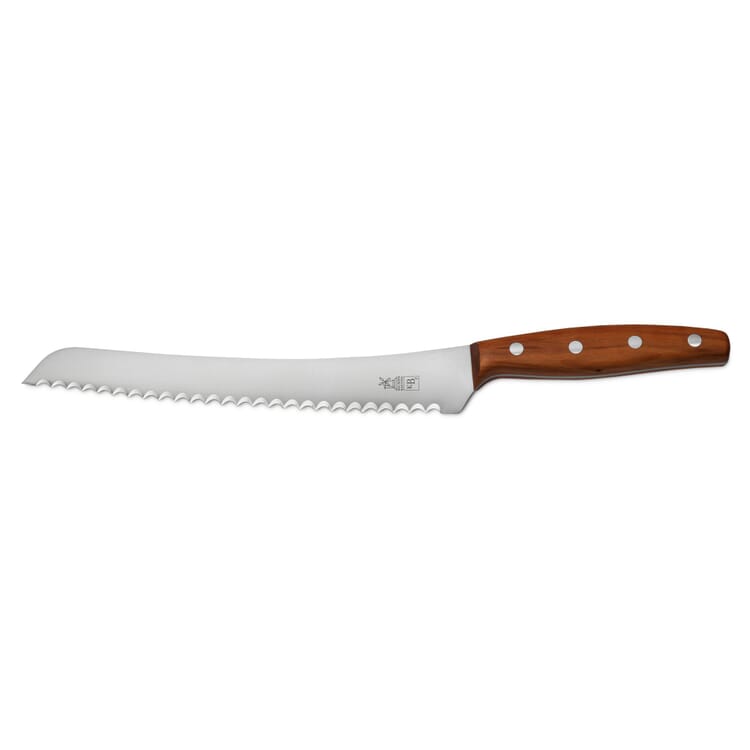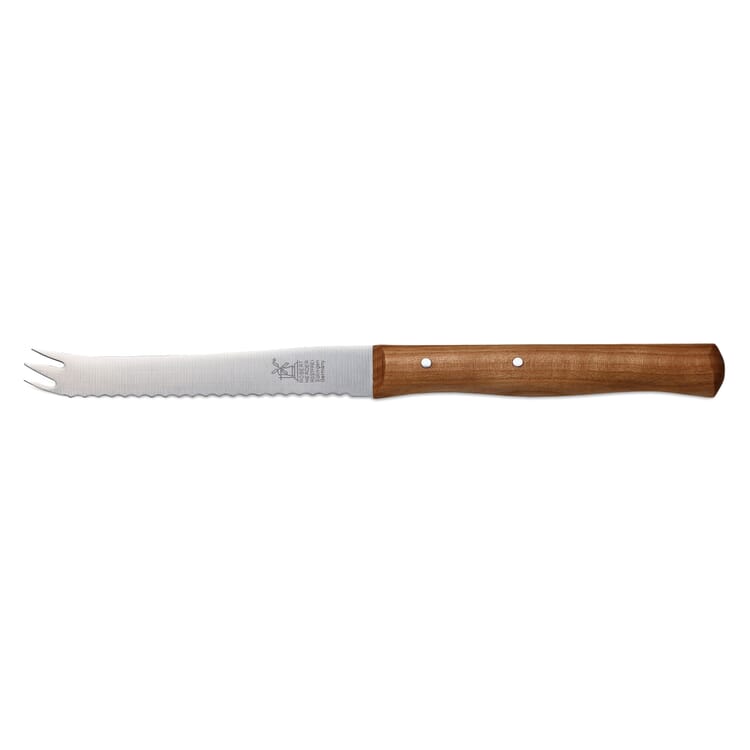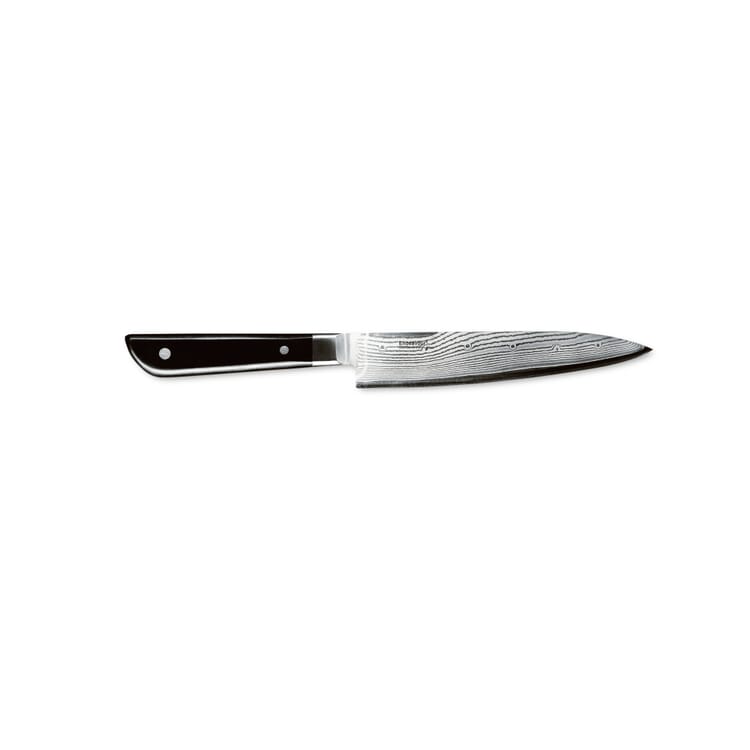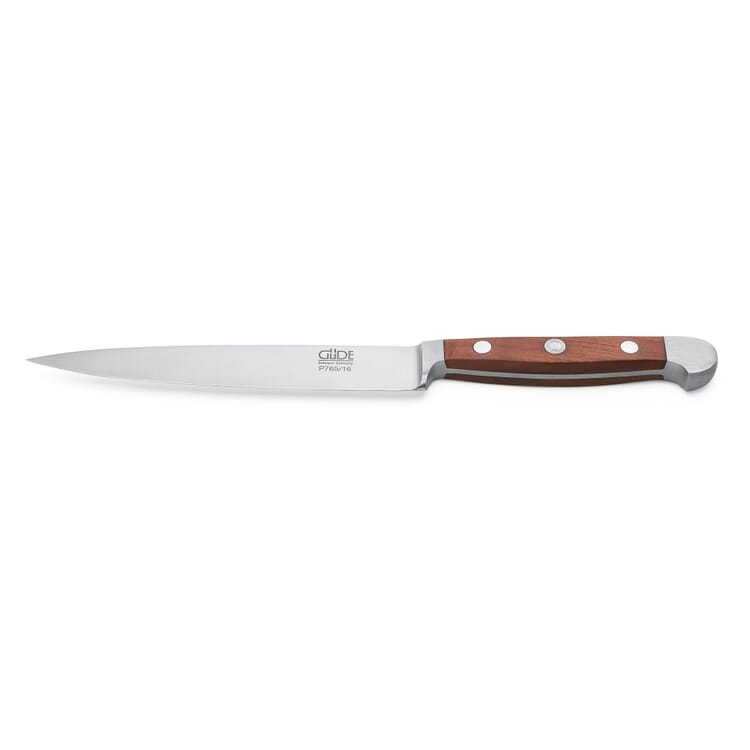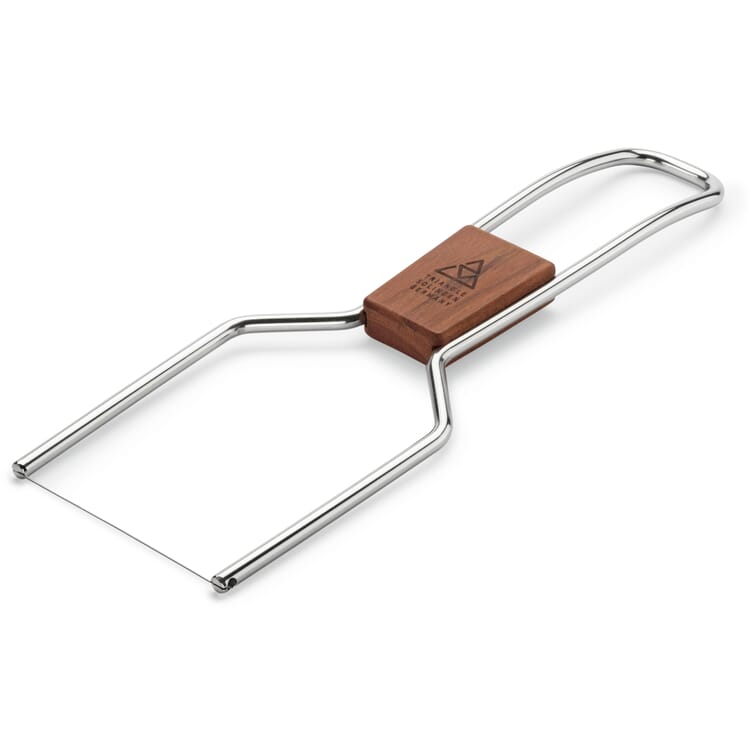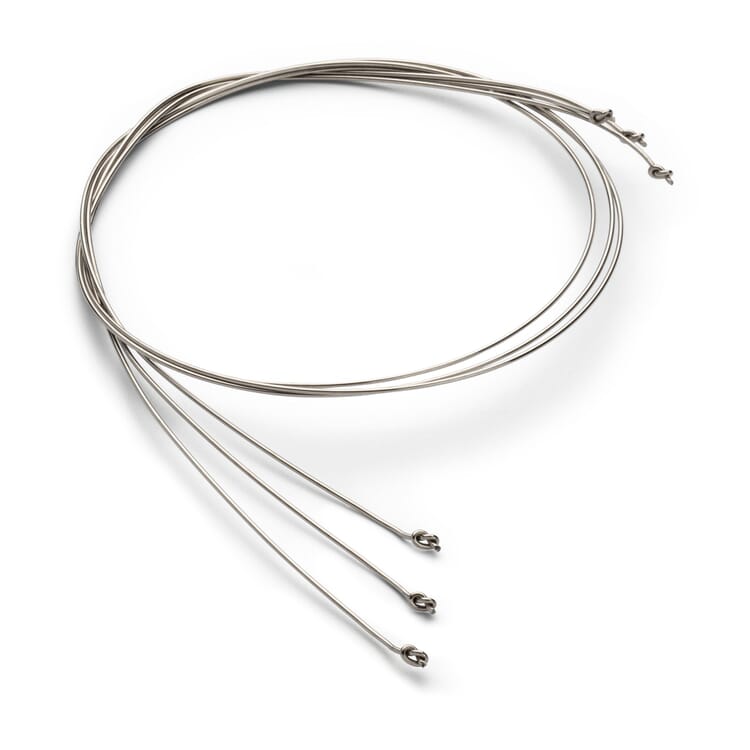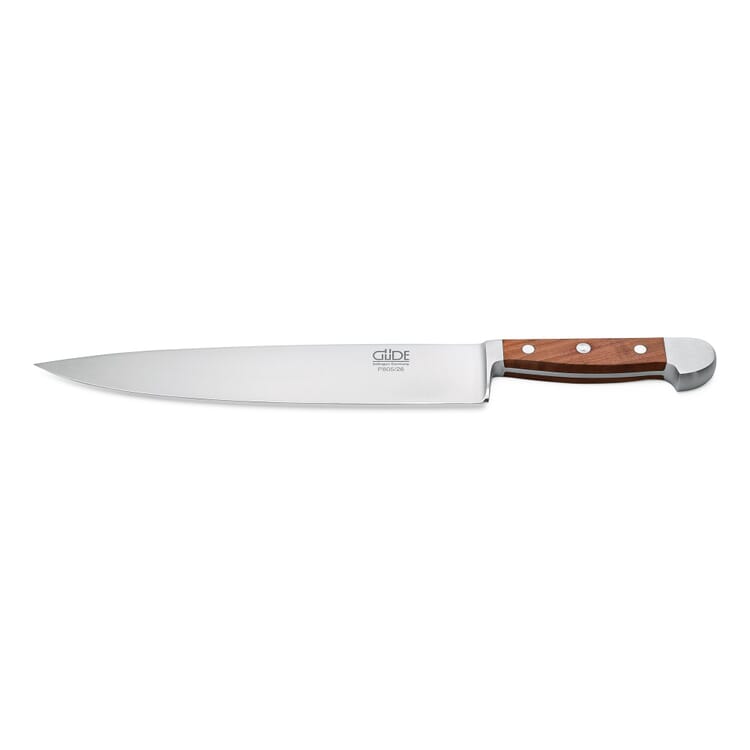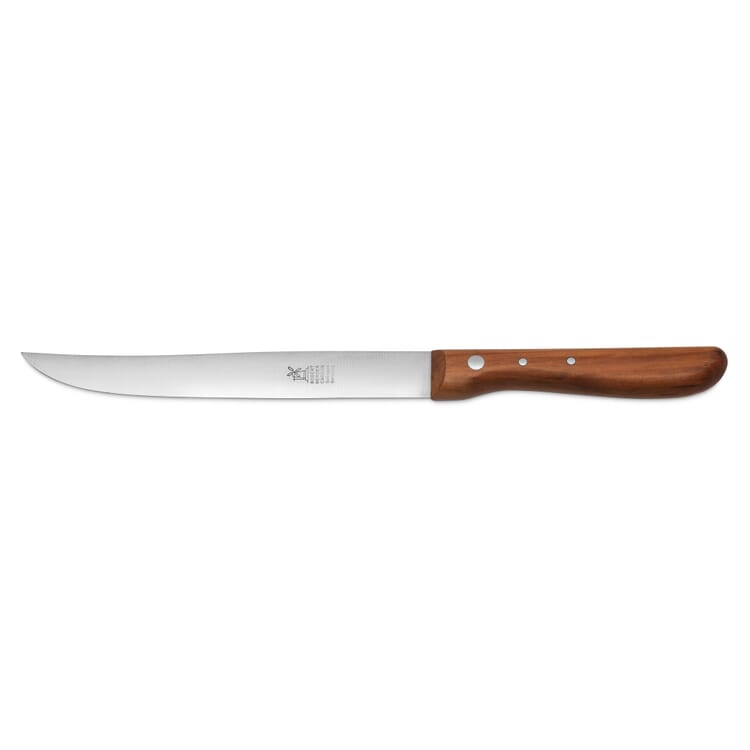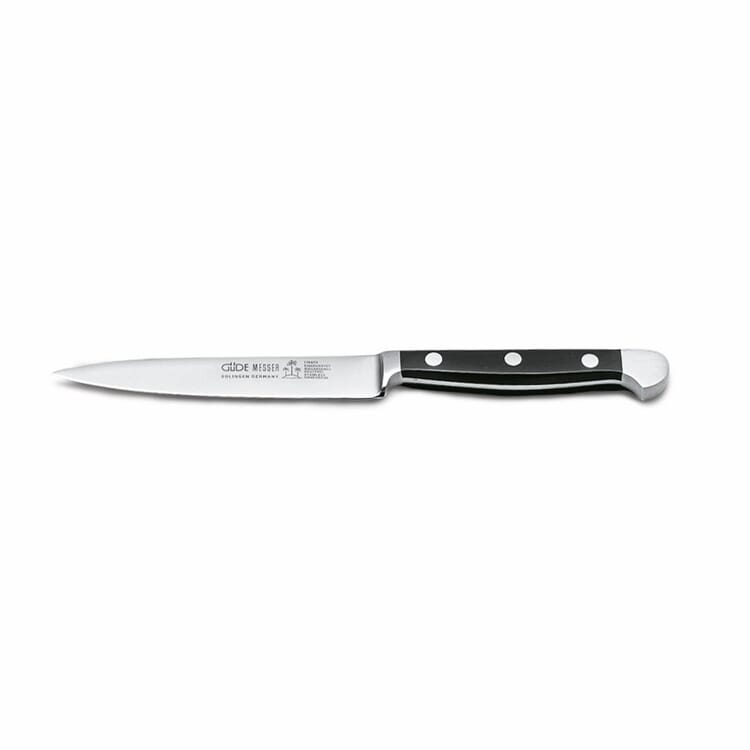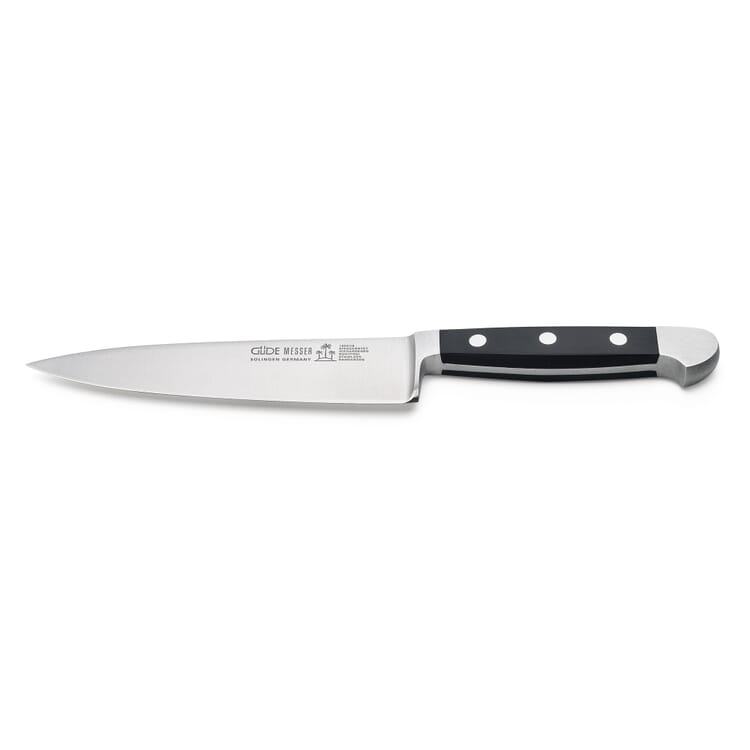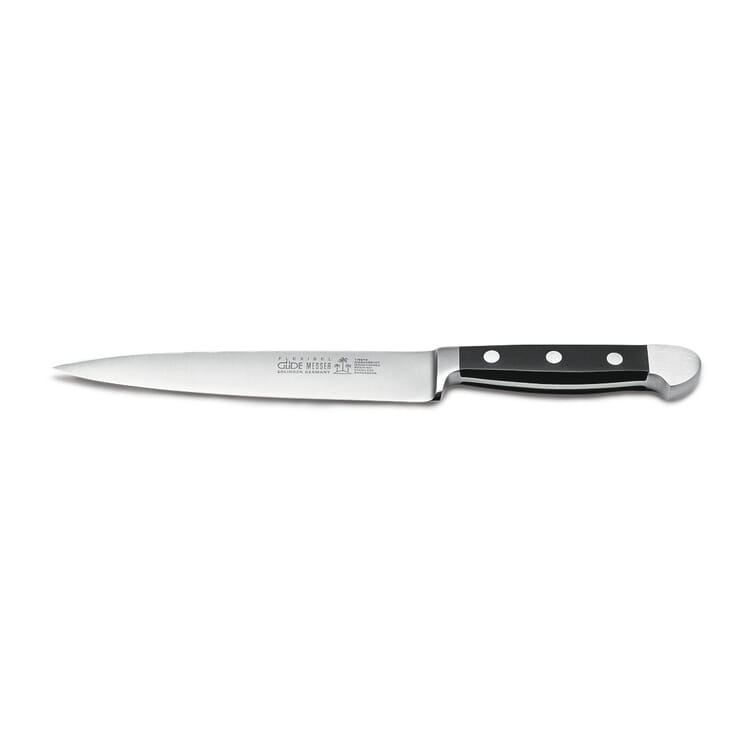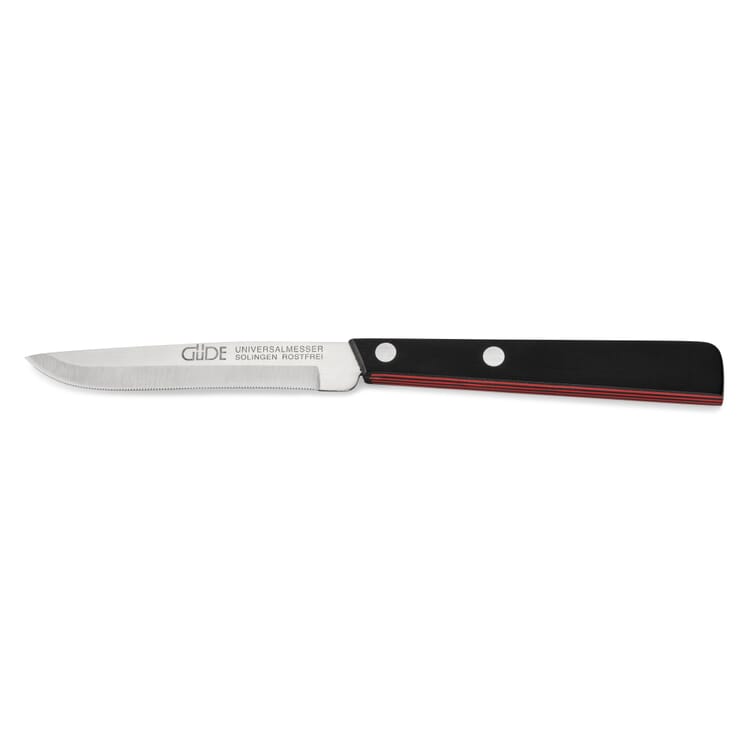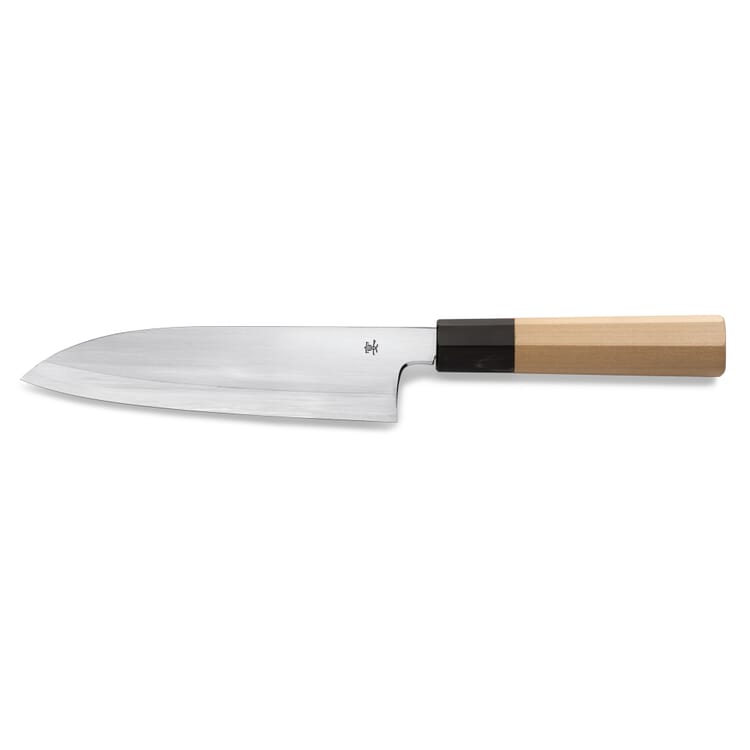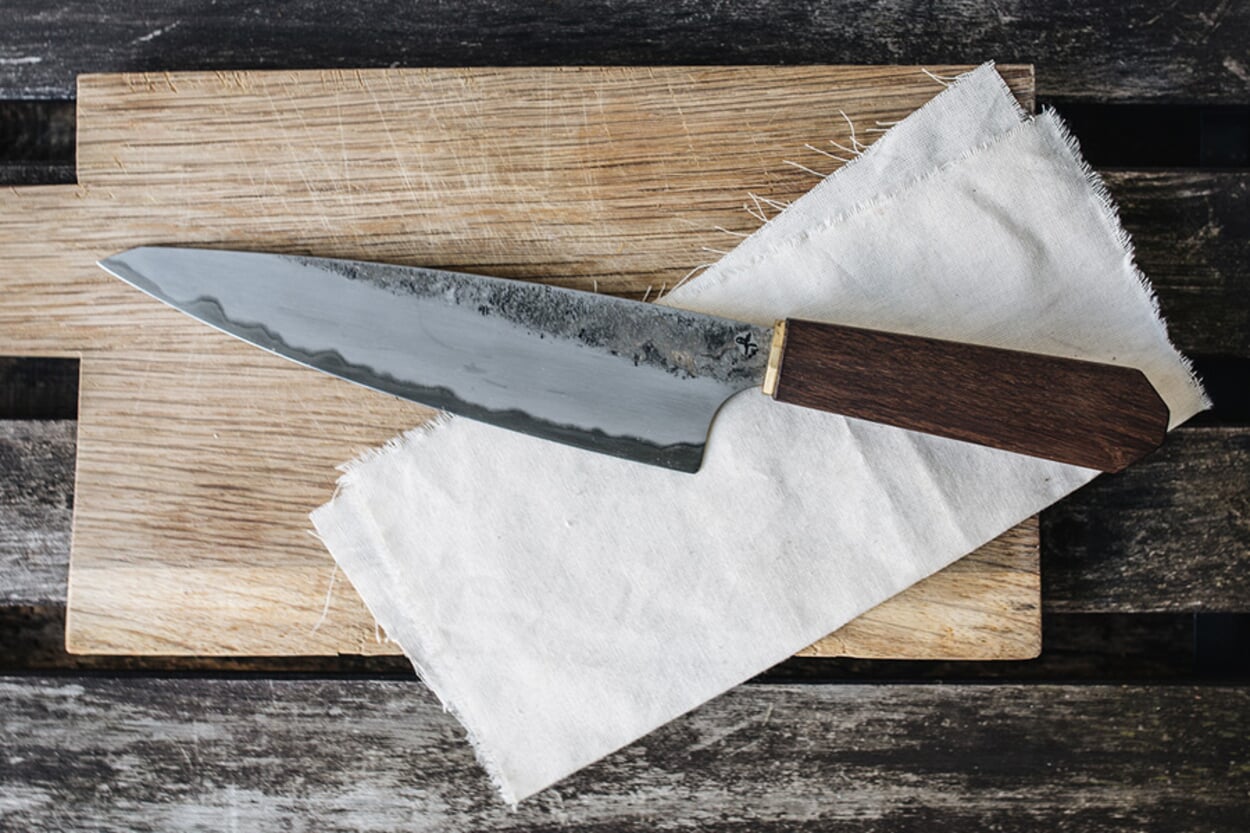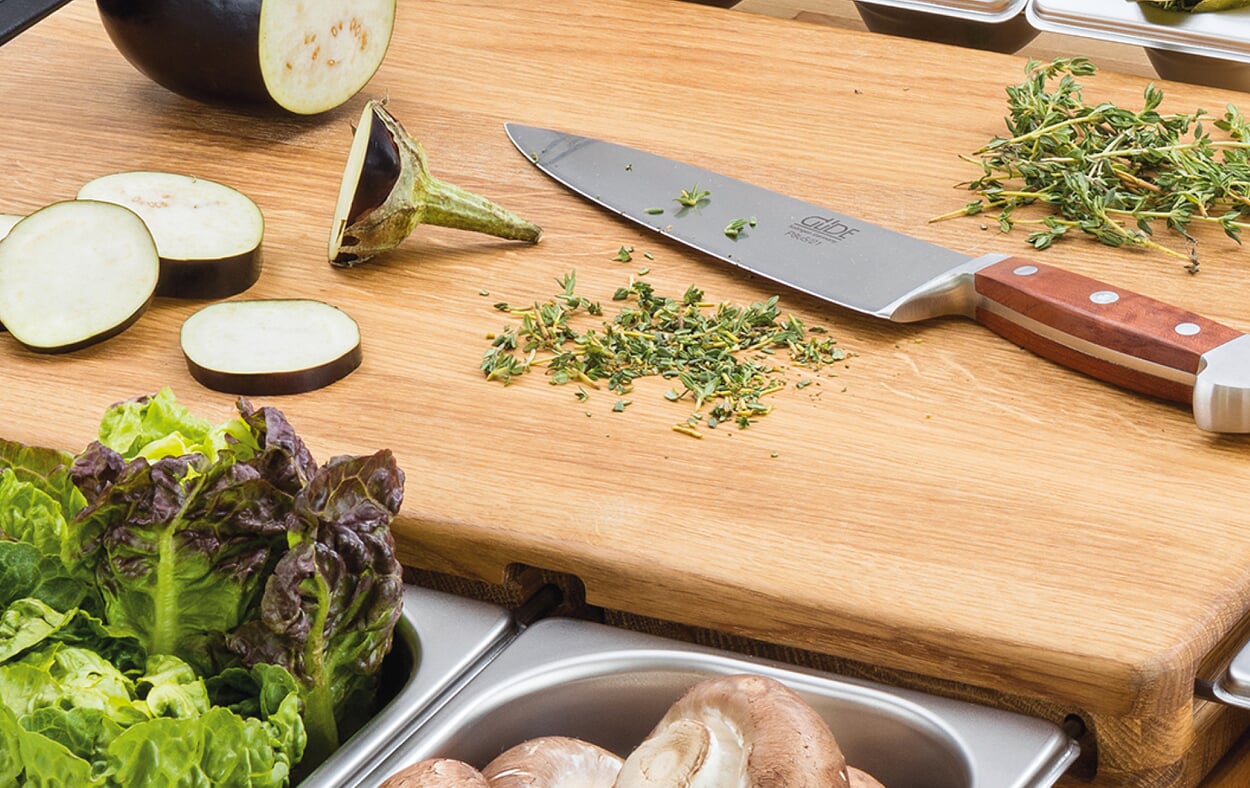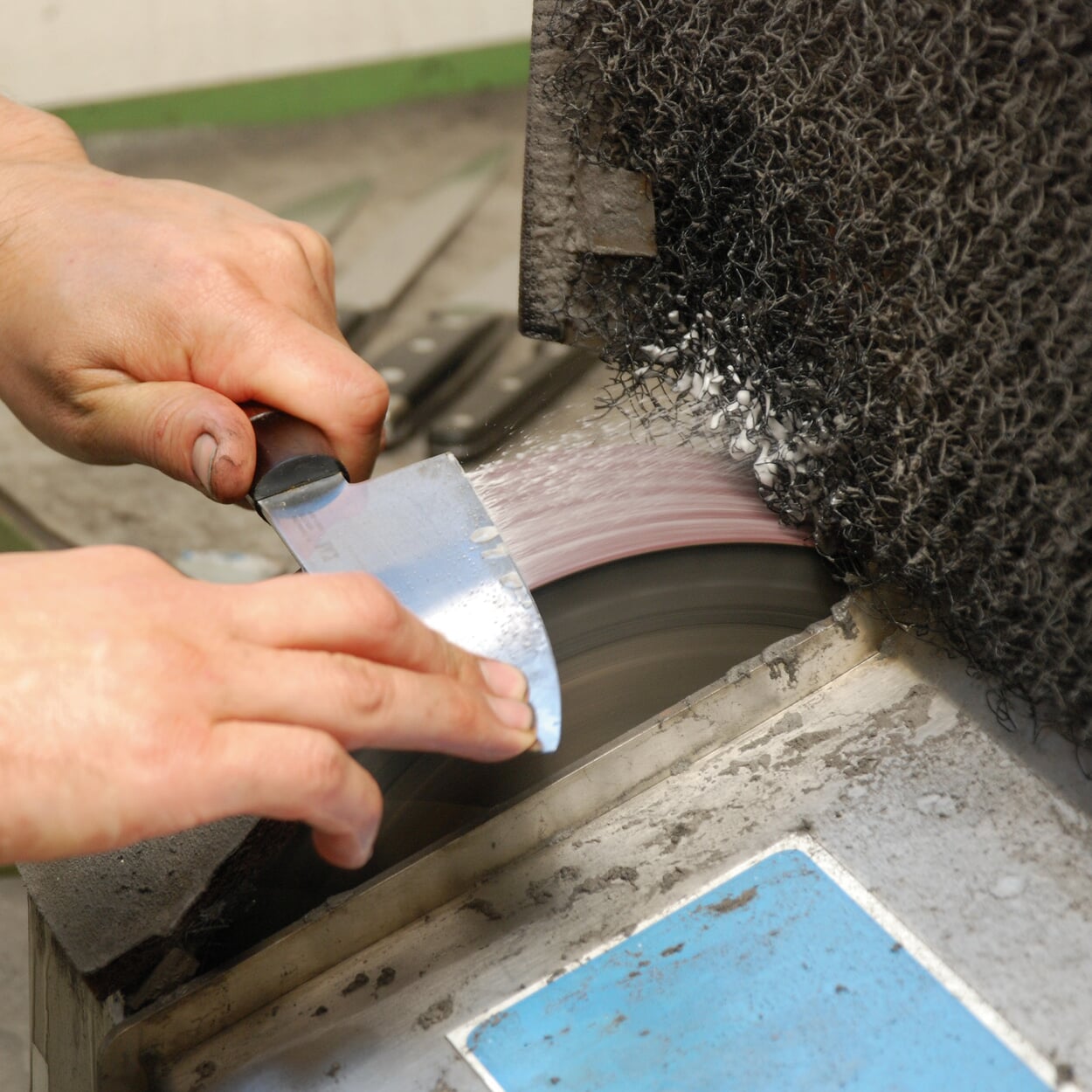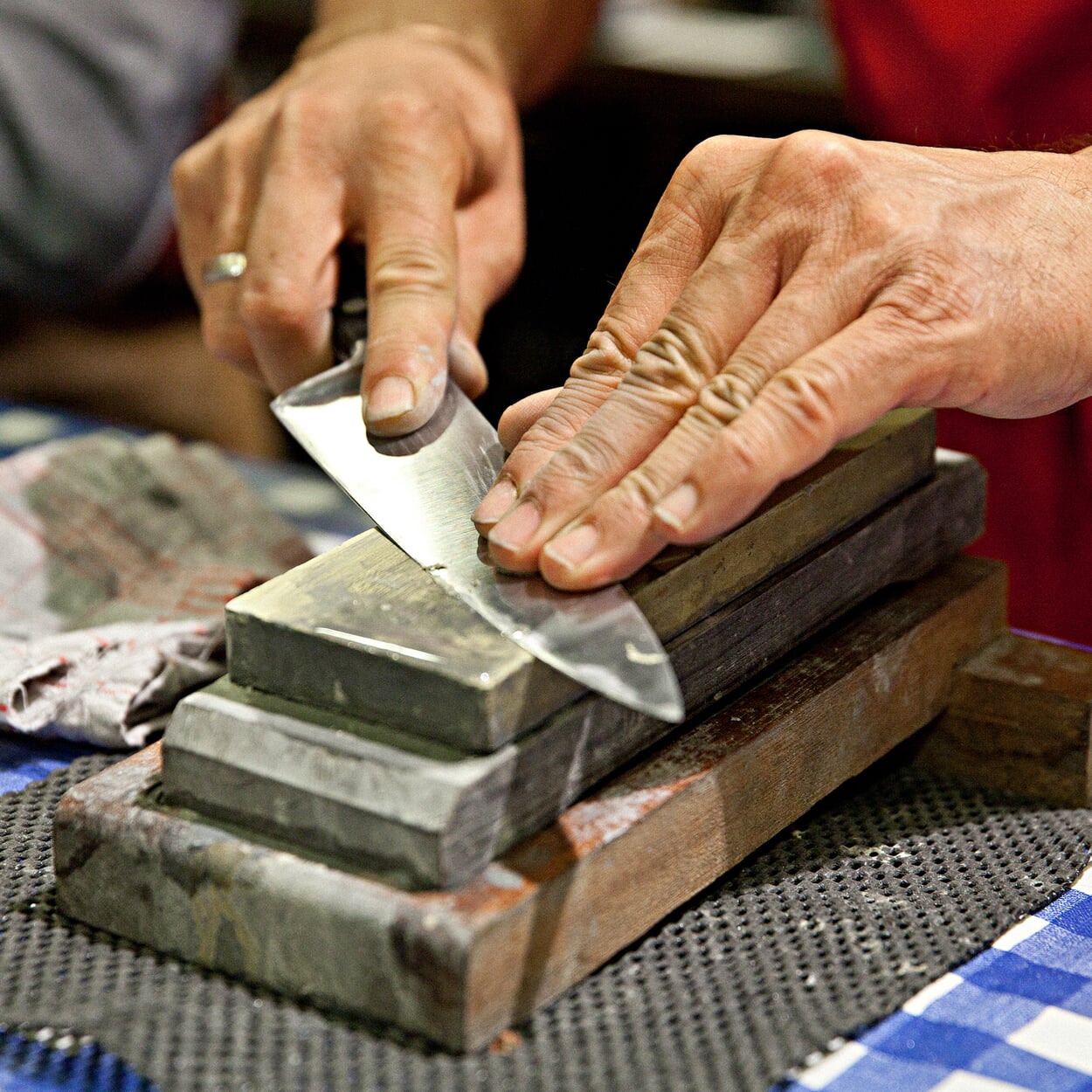Kitchen Knives
A good kitchen knife must be sharp, stay sharp for a long time, and be something that can be re-sharpened. What sounds simple at first can only be achieved in practice by the right choice of material and the particular finish the craftsman gives it. Read More
IDEAS & ADVICE
Good Kitchen Knives. Sharp and even Sharper.
A good kitchen knife must be sharp, stay sharp for a long time, and be something that can be re-sharpened. What sounds simple at first can only be achieved in practice by the right choice of material and the particular finish the craftsman gives it. Hardly surprising, when you think about it, since this holds true for most good things. Although it is not easy to draw clear lines considering the size and the complexity of the market, to help you in the selection of products, we can give you a few guidelines which have worked for us. While the final decision as to what kind of metal you choose is up to you, we have already made a selection in each category from those we regard as the best manufacturers in the knife industry.
The key aspect in this context is how the material, the method of manufacture, and the knife quality all come together.
- The composition of the blade steel significantly influences how long a kitchen knife stays sharp. This is what specialists call cutting edge retention. The more carbon is contained in the steel, the harder the knife and the greater the stability of the cutting edge is likely to be. Good carbon steel knives leave the competition far behind when it comes to the downward cut (as opposed to slicing). In this category, our suggestions for you include Herder knives, those from Hohenmoor Messermanufaktur and Japanese knives, whose sharpness is derived primarily from their metal material.
- Rockwell Hardness is the scale used to measure the material hardness of metallic materials, including steel. The metal of most knives has been tested on the C scale and carries with it the letters HRC and a number. The higher the number, the harder the blade. But hard steel alone does not make a sharp kitchen knife. The tempering, or how it was hardened, the blade geometry, i.e. the shape of the cutting edge, as well as the quality of the handicraft in grinding the cutting edge all play a part in determining a knife’s sharpness.
- Meanwhile, a blade made of carbon steel gives the grinder a much greater scope. The material is particularly fine-grained and can, therefore, be ground and polished in a number of different ways. In short, the thinner and pointier the sharpening of a kitchen knife is, the sharper its cutting edge – provided the material can withstand such treatment.
- One disadvantage, however, is that carbon steel is not rust-resistant and caring for such knives requires some attentiveness. They also wear more quickly than stainless steel kitchen knives.
- For those who prefer to worry less about their kitchen knives, we recommend using products made of slightly softer stainless steel, which is rust-proof. This is where knife manufacturer Güde comes to the fore. Güde has driven it to perfection where the edge retention of a knife is concerned. Chromium is the key corrosion-resistant element in a steel alloy, and the chrome-vanadium-molybdenum steel used at Güde meets the highest standards.
Not all criteria for a good kitchen knife can be measured objectively, however. Subjectivity also plays a part. In addition to its hardness and edge retention and the resistance against corrosion and wear, the balance and the feel of a kitchen knife might be the deciding factors when purchasing one. How a knife feels in the hand is different for everybody; it’s a personal thing.
- High-quality kitchen knives from Germany, especially the large, heavy models, are generally forged through – in other words, the steel runs through the entire length of the handle. Such a knife is well-balanced if the centre of gravity is located at the transition between the blade and the handle. This weight distribution corresponds to the way most Europeans handle a knife – with their hand covering the handle when gripping it.
- Traditional Japanese knives, on the other hand, have a different weight distribution: the blade is inserted into the handle in the hot state and remains firmly fixed even after cooling. The handles are usually made of light wood and shift the centre of gravity to the blade – typically to the rear quarter of the visible area viewed from the top. Since Japanese cooks normally grip their knife between their fingers at the cutting edge, this is not seen as a disadvantage.
- Whether or not the blade of a kitchen knife is forged through and therefore the steel runs through the entire length of the handle affects the overall weight of the knife. A heavy knife can tire the hand more than a light one. Some customers, however, prefer to hold a weightier, more substantial knife in their hands.
The Agony of Choice: What Kitchen Knives Do I Need?
There is no single right answer to the question as to what makes up the essential kitchen knife assortment because it depends on several things. The first thing you need to ask yourself is, “What — and how often — do I cook?” A purist might manage with two knives:
- The most important knife in the kitchen is the chef’s knife, also known as a French knife or cook’s knife. It is a large, all-purpose knife used for cutting and chopping vegetables, herbs, meat and fish – either coarsely or very finely. If all you have is a chef’s knife, you will be able to carry out almost all food preparation work in the kitchen.
- That’s aside from the indispensable bread knife, of course. In contrast to the smooth blade of the chef’s knife, the bread knife’s serrated edge — with this particular form of scalloped grinding having been invented by Franz Güde — is capable of slicing bread cleanly and evenly without it crumbling.
There are two to three smaller kitchen knives to complete the picture:
- The shorter and narrower version of the chef’s knife is the office knife, also known as a paring knife. It is also a general-purpose knife, but because of its more manageable size, it is more suitable for cutting smaller things, and easier to handle than the large chef's knife. Most universal knives and vegetable knives in our selection serve similar purposes. If you often peel tomatoes or other fruit or vegetables, however, we would recommend a smaller, serrated knife.
- Since the names of the individual knives do not clearly relate to tangible definitions and vary from one manufacturer to the other, you should take your bearings from the blade length and, possibly, the shape of the blade (some knives have a straight cutting edge while others are curved towards the tip). Don’t be surprised: knives of the same name might turn out to be very different from one another in shape and size.
- Even smaller and usually concave is the blade of a peeling knife. It is the smallest knife in the bundle and particularly suitable for peeling round fruit and vegetables when you want to peel as thinly as possible.
Cut to the chase that means all the other kitchen knives are designed for much more specific requirements. If you are regularly preparing more complex dishes, then it is best to purchase each additional knife separately, such as a filleting knife, or the slicers which are particularly suited to produce assorted cold cuts or to carve a turkey expertly.
Whetting the Knife: How to Sharpen a Kitchen Knife.
No matter how sharp a knife is, at some point, it has to be sharpened again so that it can continue to provide the best results. What the knife is made of will determine how easily and quickly this job is done. In principle, it is easier to get the knack of sharpening with knives made of carbon steel, but they do require more attentiveness and patience.
Generally speaking, a kitchen knife can be sharpened in one of two ways: on a whetstone or with a sharpening steel tool. The difference is as follows: While the whetstone actually removes part of the blade, thus renewing the geometry of the blade edge, most sharpening steels — also known as honing steels or chef's steels — (like the one in our range) only re-apply the worn burr of a blade, which is usually necessary with softer material and gives good results as long as the cutting edge is not completely blunt. A general rule of thumb is: the chef's steel keeps the knife sharp for longer, grinding on a whetstone is what actually sharpens the knife.
For particularly hard kitchen knives, especially the Japanese models, it is not recommended to hone them with a chef's steel; otherwise, the blade edge can be damaged. In contrast to most European knives, Japanese ones are usually ground on one side only, which allows for a steeper cutting angle. This specific blade geometry minimises the friction with the material to be cut and enables to achieve more precise cuts. At best, when sharpening Japanese knives, the steep cutting angle is preserved.
The use of a grindstone is somewhat more complex and requires practice, but delivers excellent results once you’ve got the hang of it. Before it is used, the grindstone must be wet. The water serves to cool the blade of the kitchen knife and also binds the dust during grinding. The next step is to choose a grain size: Grindstones come in different grain sizes, just like sandpaper. The larger the grain size and the smaller the number, the greater the grinding effect and the greater the removal of material from the blade. Grindstones with finer grain sizes are used for fine grinding and polishing. Double sided, combination grindstones bring together a sharpening and a polishing surface in one product. A naturally occurring type of grindstone with very fine abrasive properties is found in the Belgian Ardennes: the “Belgian Boulder” or coticule.
There are various options when it comes to sharpening a kitchen knife on a grindstone to give it a new basic sharpening. The usual recommendation is to pull the blade back and forth with a slight swing from the elbow, almost in imitation of the path taken by a windscreen wiper. The angle of the blade to the grinding stone should correspond to the original angle of the cutting edge and varies from knife to knife. Normally, the angle is between 15 and 20 degrees, although angles of 10 and 25 degrees are not unknown. It’s always helpful to familiarise yourself with how to grind a knife before you use the grindstone: the internet provides numerous comprehensive instructions on how to grind properly.
If you do not want to sharpen your knives on a grindstone, you can either use a high-quality diamond knife sharpener, which specifies the angle of the knife to the grinding surface or — and this is especially true for your premium-quality knives — entrust them to a professional. If you regularly sharpen your knives, care for them and store them properly — preferably in a knife block or on a knife rail — and ideally use only wooden boards for cutting (because all other types damage the blade), we assure you, your kitchen knives will give you pleasure for years. Provided, of course, that you start with high quality in the first place. Consider yourself well advised and enjoy pondering your choices.

